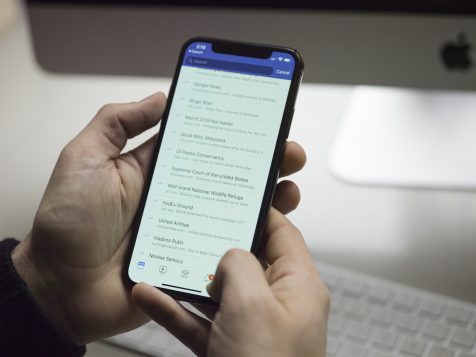
7 Best-practices for visual marketing on social media
Visual marketing is a cost-effective way to engage your audience on social media. It encompasses a range of strategies that vary from using simple photographs to crafting infographics and videos.
It’s interesting to see how more and more B2B companies are jumping on the visual marketing bandwagon, which begs the question: how will you stand out? Why will someone click YOUR post and not a competitor’s?
Firstly, it’s important to understand that “success” in visual marketing doesn’t solely depend on your amazing photography or design skills. It also depends on your messaging – and how witty, crisp, and clear your message is.
To get ahead with visual marketing, here are 7 best-practices that you should harness on social media:
1. Incorporate humor
Flooding your audience with visual information is not an effective long-term solution.
If you want to make your audience come back for more, you need to tickle their funny bone. As Jeffrey Gitomer says “If you can make them laugh, you can make them buy.”
Having said that, using the element of visual humor needs to be tactful and in line with your professional image.
Take, for example, this funny explainer video by Taulia, which takes a humorous approach to list all of its Financial Supply Chain benefits.
There’s a wonderful balance of seriousness and entertainment, keeping the brand image professional and lighthearted.
2. Involve your audience
Getting your audience involved through interactive content can be a real game-changer.
With a few simple tools, you can turn almost any lengthy post into an intriguing and interactive quiz, contest, and even a carousel.
Not only do these help your audience break away from the tedious monotony of reading, they also help you collect valuable insights and data.
Beyond their aesthetic appeal, interactive content pieces help to strengthen your audience relationships in the long-term. Your audience feels more involved, and thus, closer to your brand.
Here’s an example of an interactive quiz by BrightEdge, which tests prospects on their knowledge of SEO.
What BrightEdge has done is quite clever – breaking down its complex offerings into snappy questions & answers as a way of informing users on what it knows and does best (SEO). 
Recommended for further reading
3. Align visual with textual
For visual marketing to be effective, it needs to add value to existing information.
In other words, the visual should complement the textual – and not the other way around.
You can use images, infographics, pie-charts and a whole lot of other visual elements to support and guide the audience through the facts being stated.
This video by MailChimp demonstrates the close connection between text and visuals.
Its underlying message “managing campaigns should be easy and fun” is illustrated beautifully through graphics that depict a relaxed and laid-back monkey, enjoying a coconut cocktail.
On a boat or on a train, while at home or on a plane—create your campaigns anywhere with MailChimp’s mobile app: https://t.co/fAkjmqEi1I pic.twitter.com/moXCAa4926
— MailChimp (@MailChimp) August 23, 2017
4. Be consistent, not repetitive
Consistency is the backbone of visual marketing.
The problem with consistency is that it might force you to become repetitive.
Hence you should build a visual strategy where you constantly experiment with a variety of content types to drive out repetition.
You should still maintain a uniform color theme for your visual posts, but what’s important is that you get creative with the meat of the content.
A simple solution is to recycle old texts (e.g. blog posts) by turning them into eye-grabbing, visual content pieces (e.g. infographics, slideshows, animated videos).
5. Let go of stock images (for good)
It’s hard, I know.
But if you want to connect with your audience on a deeper level, it’s time to wave goodbye to stock images by replacing them with less generic, or even original photos/videos.
Show your human side. Being a B2B company doesn’t mean that every post has to spell out B-U-S-I-N-E-S-S.
Take the time to rethink the meaning behind your content. One simple yet under-used practice, which can easily be transferred into something visual, is creating an analogy.
(Formal definition: drawing a comparison between one thing and another, typically for the purpose of explanation or clarification)
In this case, Zendesk delivers a very clear and simple analogy: a business relationship = a romantic relationship.
Through this video, Zendesk manages to put a hilarious and authentic spin on the ‘not-so-interesting’ customer service platform.
Another trick is to physically take a photo with your iPhone. Although it’s a little more time-consuming, it’s far more relatable — not to mention, authentic and original — than a stock image.
You can also take candid shots of your own team members or give a glimpse of your work culture. The more natural, the better.
Check out this image by Salesforce for inspiration:
6. Use clear call-to-actions (CTA)
Visual content, alone, boosts your online presence. But when accompanied by a solid and emotive CTA, the same visual content does a lot more to grab your audience’s attention.
An effective CTA is simple, clear, and relevant to your target audience. It creates a sense of urgency without forcing the user.
Look at Slack’s Facebook post.
Not only is it using compelling imagery, but the solid copy “Make Work Better” creates an instant emotional connection. It tells the audience exactly what they want to hear in three short and simple words.

7. A/B test your visual strategy
Just as you would perform an A/B test on your email subject line to improve open-rates, you should also A/B test your visuals on social media to improve engagement and conversion rates.
In fact, this article explains exactly why social media A/B testing is a must.
When it comes to A/B testing your visuals, the options are seemingly endless.
Take it step by step – and remember to test only one variable at a time – whether it’s the image, video, or CTA. For example:
- Post with Image vs. Post with Video
- Stock Photo vs. Original Photo
- Short Video vs. Long Video
- “Download Now” vs. “Try This”
Track your results and choose the winning option. Then, test the winning option again, this time adding another minor variation to see if you can further optimize your results.
Key takeaways
In the realm of B2B marketing, ‘visual marketing’ is a world on its own.
With the right visuals and copy, you can create a strong social media presence that drives your audience to act.
Leverage these best practices, experiment as much as possible, and analyze their true impact to understand what works and what doesn’t.
Like what you read? Perhaps you’ll find these articles interesting:


